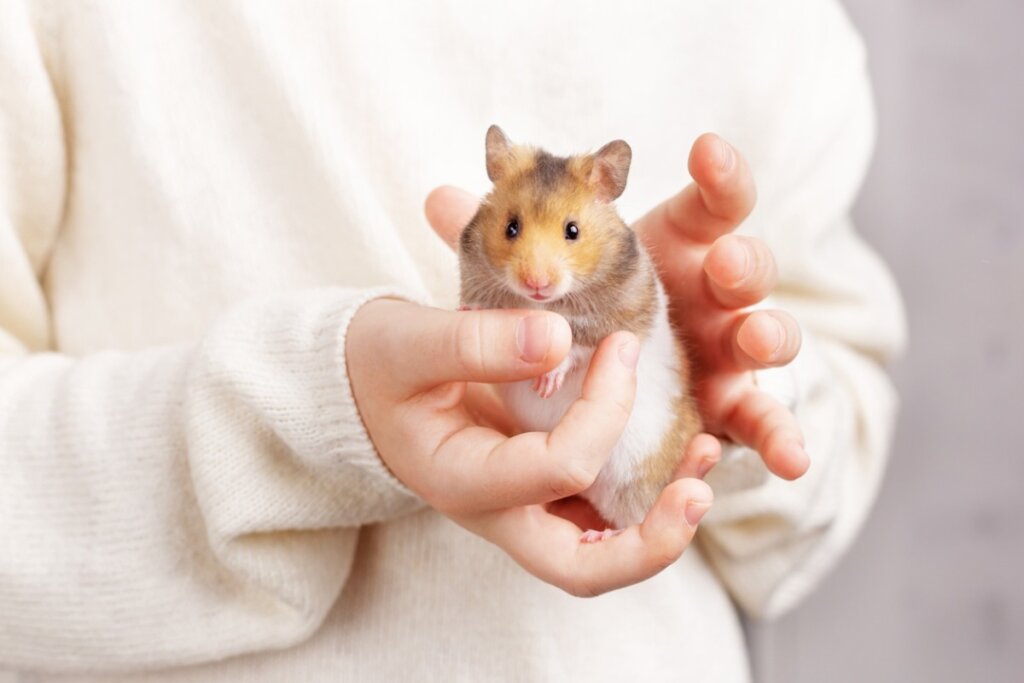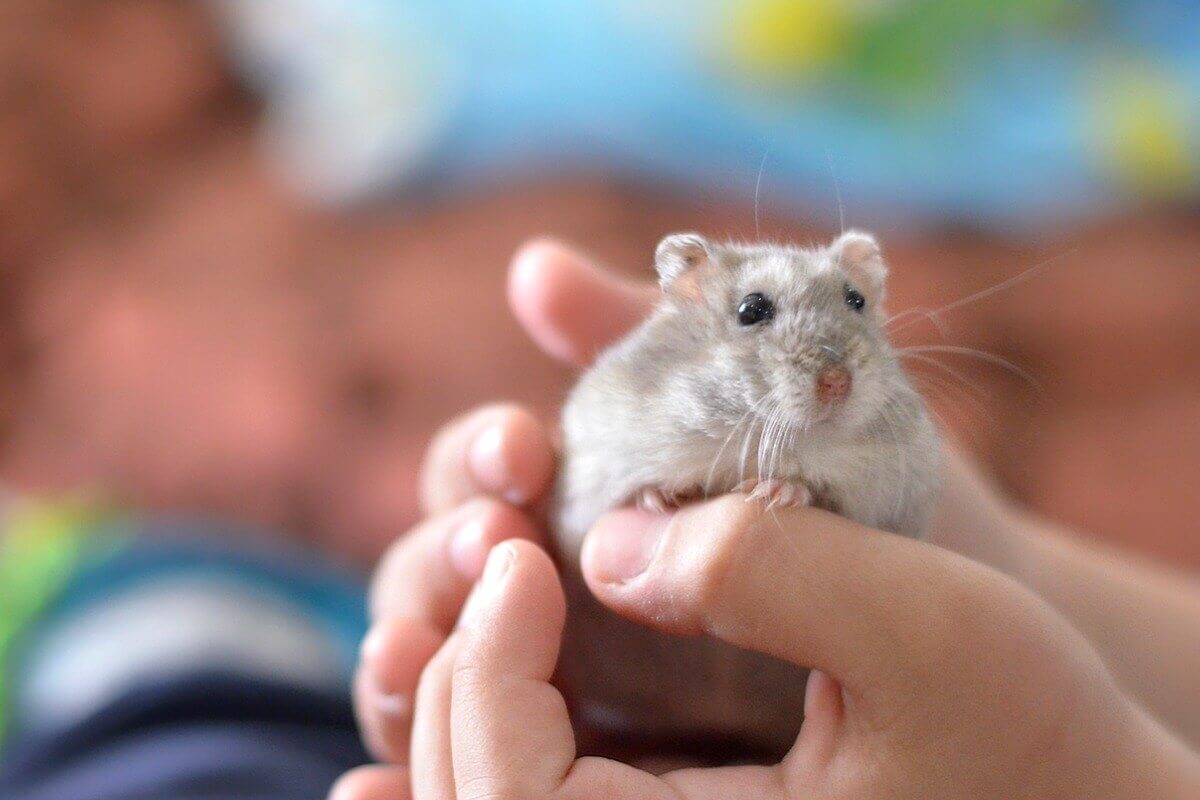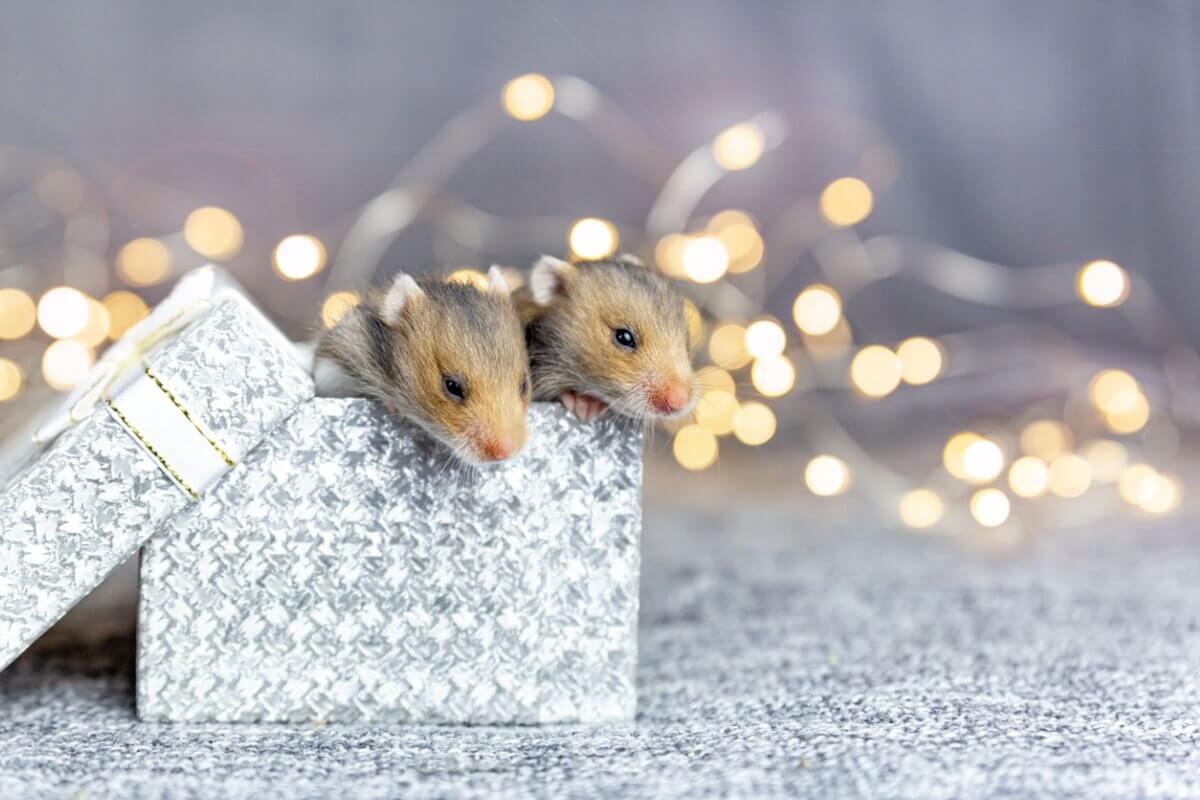How to Prevent Your Hamster From Eating Its Young?

When a living being gives birth in our home, watching the little ones grow is a stage that’s full of joy and learning. However, sometimes you can witness an act that, from a human point of view, seems horrifying. With that in mind, we want to talk about how to prevent your hamster from eating its young.
It’s understandable that you want to avoid this event at all costs. However, in order to do so, you first need to understand the reasons why an animal might eat its offspring that it’s meant to care for. Here you’ll find answers to this conundrum, as well as some tips on how to keep it from happening. Keep reading!
Why does an animal eat its young?
It seems logical to think that the best way to perpetuate a species is to have as many children as possible. However, this reflection is made from the human perspective, in which there are usually enough resources to maintain the offspring, as well as a safe shelter and a partner to help in the upbringing. When it comes to wild animals, this isn’t always the case.
At the same time, while humans usually have one offspring at a time (sometimes more, but not exaggeratedly large numbers), other animals, such as hamsters, are capable of giving birth to litters of more than 10 offspring in very short intervals. In addition, in the wild, they have to defend themselves from predators and feed their offspring, something that complicates survival.
When there are difficulties, trying to ensure that all the offspring survive against all odds can mean the death of the parent and, therefore, that of the litter. Often, it’s best for the survival of the species to reduce or abandon a litter to ensure that others can be produced in the future.
The parents of many species abandon or kill part of their offspring to ensure the survival of the rest of the offspring. Although it may seem cruel, this is a utilitarian issue.

What makes a hamster eat its young?
There are several reasons why a mother hamster eats one of its offspring. In addition, you should keep in mind that this act is an evolutionary mechanism implemented in their instinct, so in captivity, it can happen even if there are no overt threats. Here are the most common reasons behind a hamster eating its young:
- The number of offspring: As mentioned above, hamsters can have litters of 10 offspring in one pregnancy. The energy and milk production required to keep them all alive can compromise the mother’s own survival or that of the entire litter. This isn’t in any way beneficial to either parties involved.
- The presence of the father in the cage: Males of this species don’t carry out parental care. Therefore, if a male hamster is in the same cage as the female and her litter, he could kill them due to territoriality.
- The mother feels weak: If the offspring require more resources than the mother is able to provide, she may eat some of them. This way, she reduces costs and recovers energy.
- The hamster is stressed: In the wild, the mother might eat her young if she feels in danger, so she recovers some of the energy invested in the litter in order to escape, survive, and have offspring later. In captivity, stress can trigger this same response.
In any case, the resource optimization hypothesis is one of many that have been hypothesized to answer the question of why a hamster eats its young. The reason for this isn’t known for certain, although it’s a widespread behavior in the rodent world.
How do you prevent your hamster from eating its young?
In captivity, you’ll not always be able to prevent the mother hamster from eating her young. However, you can minimize the chances of this happening with the following actions:
- Remove the father from the cage when the offspring are born: This way, you keep the mother from eating them due to the stress of his presence, as well as the male’s aggression towards the offspring.
- Maintain a quiet environment: Don’t get too close to the cage and avoid loud and constant noises. The mother and young are more susceptible to stress than usual, so disturb them as little as possible.
- Don’t touch the young: Avoid touching the offspring until they’re at least 2 weeks old because, before that, there’s a chance that the mother will reject her offspring if they smell you.
- Feed the mother well: Feeding litters of more than 5 offspring, as you can imagine, is costly in terms of energy. Make sure the hamster always has food available and increase the amount of protein in her diet.

The importance of responsible ownership
It’s very cute to watch little hamsters grow up. However, raising these animals at home places a great burden on the mother, so think carefully before allowing the parents to mate. Do you have the knowledge and resources to manage hamster breeding? Who’s going to keep the babies when they’re born?
These and many other questions need to be answered before breeding. Finally, ask yourself if keeping the litter in the cage is best for the welfare and peace of mind of your rodents. Bringing life into the world should be a celebration, not an accident.
All cited sources were thoroughly reviewed by our team to ensure their quality, reliability, currency, and validity. The bibliography of this article was considered reliable and of academic or scientific accuracy.
- Luis, J. A., Carmona, A., & Cárdenas, R. (2002). Las bases biológicas del comportamiento materno de los roedores.
- Schneider, J. E., & Wade, G. N. (1989). Effects of maternal diet, body weight and body composition on infanticide in Syrian hamsters. Physiology & behavior, 46(5), 815-821.
- MATT, K. S., BOZINOVIC, F., & MERRITT, J. F. (1994). Energetic costs of biparental care behavior in the Siberian dwarf hamster Phodopus sungorus. Revista Chilena de Historia Natural, 67, 309-314.
